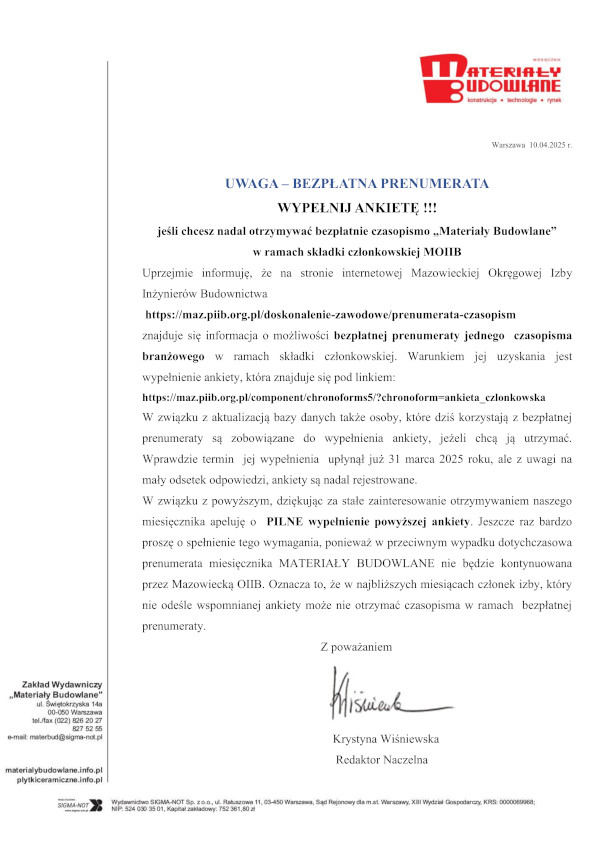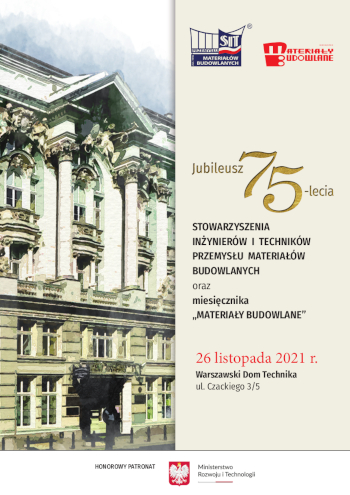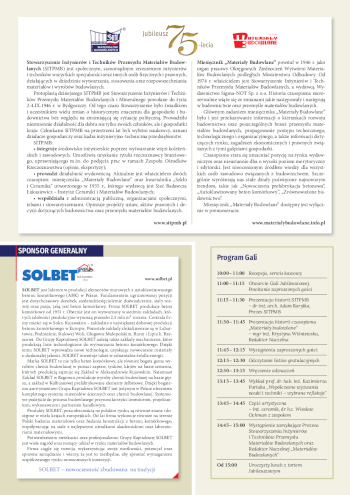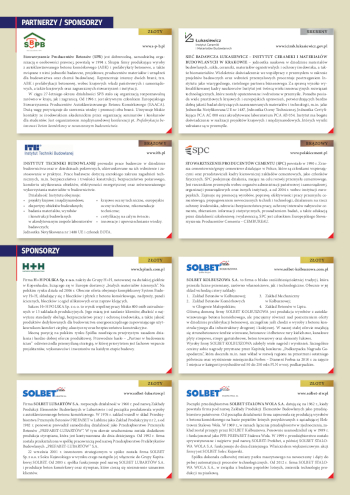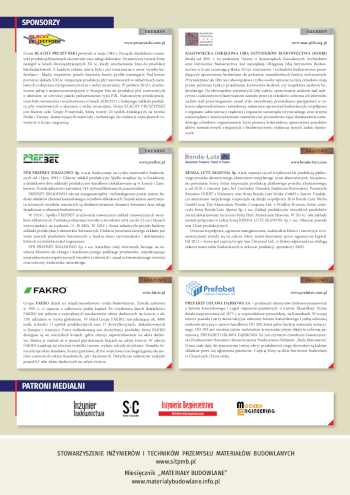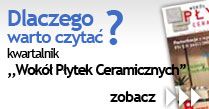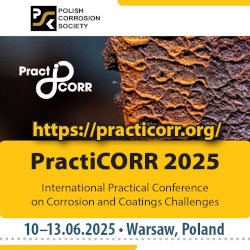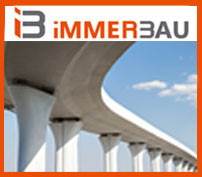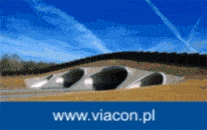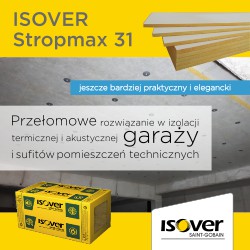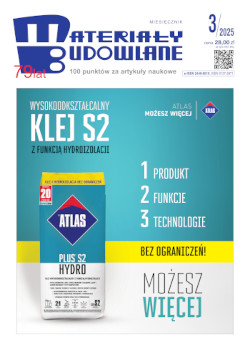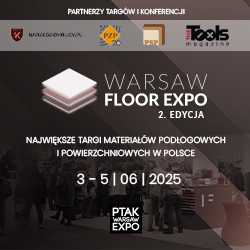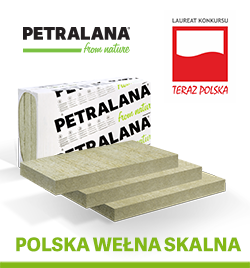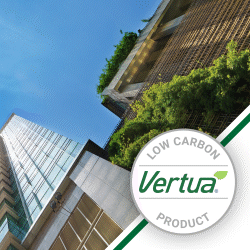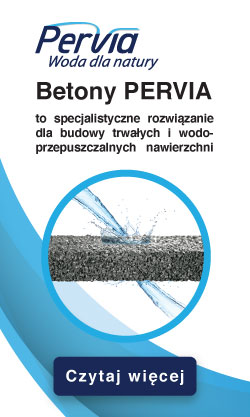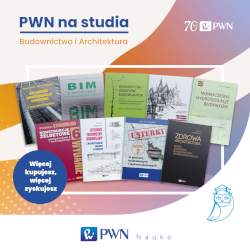Open Access (Artykuł w pliku PDF)
Limestone in the composition of cement composites
dr inż. Maciej Batog, Centrum Technologiczne Betotech Sp. z o.o.
ORCID: 0000-0001-9908-0642
prof. dr hab. inż. Zbigniew Giergiczny, Politechnika Śląska, Wydział Budownictwa
ORCID: 0000-0003-2994-201
Adres do korespondencji: Ten adres pocztowy jest chroniony przed spamowaniem. Aby go zobaczyć, konieczne jest włączenie w przeglądarce obsługi JavaScript.
DOI: 10.15199/33.2022.12.32
Oryginalny artykuł naukowy
Streszczenie. W artykule przedstawiono wpływ wapienia (LL) na cechy fizyczne i chemiczne stwardniałego zaczynu cementowego. Przeanalizowano właściwości cementu portlandzkiego wapiennego CEMII/A, B-LL oraz cementu portlandzkiego wieloskładnikowego CEM II/A, B-M (S, LL) i CEM II/A, B (V-LL). Podkreślono znaczenie wielkości wskaźnika w/c w przypadku poziomu wytrzymałości i trwałości kompozytów cementowych, w których głównym składnikiem jest wapień (LL). Z tego względu domieszki chemiczne mają istotną rolę w kształtowaniu właściwości betonu wykonanego z cementu zawierającego wapień.
Słowa kluczowe: wapień; cement; właściwości.
Abstract. The article presents the influence of limestone (LL) on the physical and chemical properties of hardened cement paste. The properties of the Portland limestone cement CEMII/A, B-LL and the Portland composite cements CEM II/A,B-M (S, LL) and CEM II/A,B (V-LL) were analysed. The importance of the w/c-ratio for the level of strength and durability of cement composites made of cement containing limestone (LL) as the main component was emphasized. For this reason, chemical admixtures play an important role in shaping the properties of concrete with cement containing limestone.
Keywords: limestone; cement; properties.
Literatura
[1] WBCSD, Cement Sustainability Initiative, Getting the Numbers Right. Project Emissions Report. 2014.
[2] Scrivener KL, Gartner EM. Eco-efficient cements: potential economically viable solutions for a low-CO2 cement-based materials industry. Cem. Concr. Res. 2018; 114: 2 – 26.
[3] Giergiczny Z. Fly ash and slag. Cem. and Concr. Res. 2019; 124: 105826.
[4] Giergiczny Z. Popioł lotny w składzie cementu i betonu, Wydawnictwo Politechniki Śląskiej. 2013. Gliwice.
[5] Nieć M, Tchorzewska D. Złoża wapieni i kopalin wapniowych, w: R. Ney (Red.). Surowce Skalne. 2001: s. 122 – 125.Wydawnictwo Instytutu GSMiE PAN.
[6] PN-EN 197-1:2012 Cement. Część 1: Skład, wymagania i kryteria zgodności dotyczące cementow powszechnego użytku.
[7] PN-EN197-5:2021 Cement – Część 5: Cementy portlandzkie wieloskładnikowe CEM II/C-M i wieloskładnikowe CEM VI.
[8] Dietrich N, Lipus K, Rickert J. Influence of limestone composition in cementon cement and concrete properties. Concrete Technology Reports. 2016 – 2018, VDZ Dusseldorf, 2019: 79 ÷ 88.
[9] Dhandapania Y, Santhanama M, Kaladharan G, Ramanathan S. Towards ternary binders involving limestone additions – A review. Cem. and Concr. Res. 2021; 143: 106396.
[10] BrikiY, ZajacM, Ben HahaM, Scrivener K. Impact of limestone fineness on cement hydration at early age. Cem. and Concr. Res. 2021; 147.
[11] Giergiczny Z, PiechowkaM, SokołowskiM. Cementy z dodatkiemkamienia wapiennego.Materiały Budowlane. 2009; 10: 30 ÷ 32.
[12] GołaszewskaM.Wpływ wapienia na kształtowanie się właściwości cementow wieloskładnikowych wapienno-żużlowych. Praca doktorska. Wydział Budownictwa, Gliwice, 2019.
[13] Zajac M, Rossberg A, Saout G, Lothenbach B. Influence of limestone and anhydrite on the hydration of Portland cements. Cem. Concr. Compos. 2014; 46: 99 – 108.
[14] Pera J, Husson S, Guilhot B. Influence of finely ground limestone on cement hydration. Cement and Concrete Composites. 1999; 2: 99 – 105.
[15] Zajac M, Durdzinski P, Giergiczny Z, Ben Haha M. New insights into the role of space on the microstructure and the development of strength of multicomponent cements, Cem. Concr. Compos. 2021; 121: 104070.
[16] Giergiczny Z, Sokołowski M. Limestone as a component of composite cement, Non-traditional Cements and Concrete, 3rdInternational Symposium, Brno, 10-12 June, 2008, pp. 263 – 271.
[17] Glockler J. Warsztaty tematyczne „Cementy wieloskładnikowe i dodatki mineralne do ich produkcji” 2-3marca 2017 r., Instytut Badawczy VDZ, Dusseldorf.
[18] Boubekeur T, Boulekbache B, Aoudjane K, Ezziane K, Kadri E. Prediction of the durability performance of ternary cement containing limestone powder and ground granulated blast furnace slag, Constr. Build. Mater. 2019; 209: 215 – 221.
[19] Chłądzyński S. Odporność cementu na agresję siarczanową w świetle badań długoterminowych. Dni Betonu, 2002.
[20] Chen CT,YangWC.Mitigation of alkali-silica reaction in mortar with limestone addition and carbonation, Sustain. Constr.Mater.Technol. 2013.
[21] Panesar DK, Zhang R. Performance comparison of cement replacingmaterials in concrete: Limestone fillers and supplementary cementing materials –Areview, Constr. Build.Mater. 2020; 251.
[22] DiabAM, ElmoatyA, ElmoatyMA,AlyAA. Long termstudy ofmechanical properties, durability and environmental impact of limestone cement concrete,Alexandria Eng. J. 2016; 55: 465 – 1482.
[23] Bishnoi SS,Martirena F, Scrivener K. Limestone calcined clay cement and concrete: A state- -of-the-art reviewCem. and Concr. Res. 2021; 149.
[24] Antoni M, Rossen J, Martirena F, Scrivener K. Cement substitution by a combination of metakaolin and limestone. Cem. Concr. Res. 2012; 42 (12): 1579–1589.
Przyjęto do druku: 10.10.2022 r.
Materiały Budowlane 12/2022, strona 119-124 (spis treści >>)


